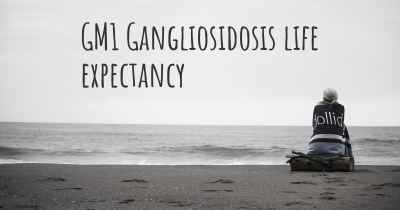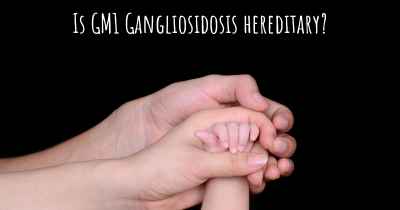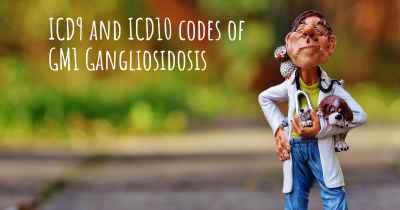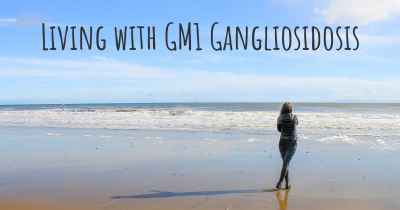Which are the symptoms of GM1 Gangliosidosis?
See the worst symptoms of affected by GM1 Gangliosidosis here

Symptoms of GM1 Gangliosidosis
GM1 Gangliosidosis is a rare genetic disorder that affects the body's ability to break down a specific type of fat called gangliosides. This condition is caused by mutations in the GLB1 gene, which leads to a deficiency of the enzyme beta-galactosidase. As a result, gangliosides accumulate in various tissues and organs, causing progressive damage.
The symptoms of GM1 Gangliosidosis can vary widely depending on the age of onset and the specific subtype of the disease. There are three main subtypes: infantile, juvenile, and adult-onset. Each subtype has distinct features and progression patterns.
Infantile-Onset GM1 Gangliosidosis
Infantile-onset GM1 Gangliosidosis is the most severe form of the disease and typically presents within the first few months of life. Infants with this subtype may initially appear normal, but as the disease progresses, they start showing developmental regression and loss of acquired skills. Some of the key symptoms include:
- Neurological deterioration: Infants experience a progressive decline in motor skills, such as head control, sitting, crawling, and walking. They may also have muscle weakness and hypotonia (low muscle tone).
- Seizures: Seizures are common in infantile-onset GM1 Gangliosidosis and may be difficult to control with medication.
- Intellectual disability: Cognitive impairment becomes evident as the disease progresses, leading to severe intellectual disability.
- Abnormal eye movements: Infants may exhibit abnormal eye movements, including gaze palsy and rapid, involuntary eye jerking (nystagmus).
- Hepatosplenomegaly: Enlargement of the liver (hepatomegaly) and spleen (splenomegaly) is common in GM1 Gangliosidosis.
- Respiratory problems: Affected infants may experience recurrent respiratory infections, breathing difficulties, and an increased risk of aspiration pneumonia.
- Coarse facial features: Facial features may become coarse over time, with a prominent forehead, wide-spaced eyes, and a flat nasal bridge.
Juvenile-Onset GM1 Gangliosidosis
Juvenile-onset GM1 Gangliosidosis typically manifests between the ages of 3 and 10 years, although the onset can vary. This form of the disease is characterized by a slower disease progression compared to the infantile subtype. Symptoms may include:
- Neurological decline: Children experience a gradual loss of motor skills, including walking, coordination, and balance. Muscle weakness and spasticity (stiffness) may also be present.
- Seizures: Seizures are common in juvenile-onset GM1 Gangliosidosis, similar to the infantile subtype.
- Cognitive decline: Intellectual decline becomes more apparent, leading to moderate to severe intellectual disability.
- Speech difficulties: Children may have speech delays and difficulties with articulation.
- Visual impairment: Progressive loss of vision is a characteristic feature of juvenile-onset GM1 Gangliosidosis.
- Hearing loss: Some individuals may experience hearing loss or impairment.
- Skeletal abnormalities: Bone abnormalities, such as scoliosis (curvature of the spine) and dysostosis multiplex (abnormal bone development), may be present.
Adult-Onset GM1 Gangliosidosis
Adult-onset GM1 Gangliosidosis is the rarest form of the disease and typically presents during late adolescence or adulthood. The symptoms tend to progress more slowly compared to the other subtypes. Common features include:
- Neurological symptoms: Adults may experience a gradual decline in motor skills, including muscle weakness, tremors, and difficulty with coordination.
- Psychiatric symptoms: Behavioral changes, mood disturbances, and psychiatric symptoms, such as depression and anxiety, may occur.
- Cognitive decline: Intellectual decline becomes evident, leading to mild to moderate intellectual disability.
- Speech difficulties: Speech problems, including dysarthria (difficulty in articulating words), may be present.
- Visual and hearing impairment: Progressive loss of vision and hearing may occur.
- Muscle stiffness: Some individuals may experience muscle stiffness and spasticity.
- Skeletal abnormalities: Similar to the juvenile-onset subtype, bone abnormalities may be observed.
It is important to note that the symptoms and their severity can vary among individuals with GM1 Gangliosidosis, even within the same subtype. Genetic counseling and early diagnosis are crucial for appropriate management and support for affected individuals and their families.
Posted Apr 11, 2019 by Cindy 100








